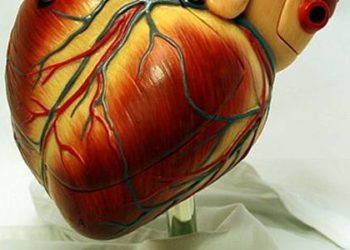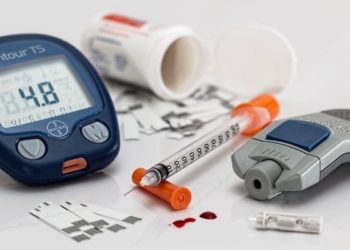Sodium-glucose co-transporter-2 inhibitors may decrease risk of in-stent thrombosis
1. Sodium-glucose co-transporter-2 inhibitor (SGLT2i) use was associated with a decreased risk of in-stent restenosis (ISR) related major adverse cardiac events (MACEs) in patients with type 2 diabetes mellitus (T2DM) who experienced an acute myocardial infarction (AMI) and underwent a percutaneous intervention (PCI).
2. Between the individual SGLT2is, there were no differences in the ISR-related MACE among users of empagliflozin, canagliflozin, or dapagliflozin.
Evidence Rating Level: 2 (Good)
Study Rundown: Restenosis is defined as the re-narrowing of an arterial lumen following corrective vascular intervention like percutaneous intervention (PCI) and coronary artery bypass graft (CABG) surgery. Revascularization procedures have become increasingly common, and as a result, restenosis is an increasingly important issue in clinical practice. Previous studies have found that patients with type 2 diabetes mellitus (T2DM) experience an accelerated rate of loss of lumen diameter and an increased incidence of intra-stent restenosis. Sodium-glucose co-transporter-2 inhibitors (SGLT2i) have been found to improve cardiovascular outcomes in T2DM and non-DM patients, but there is a paucity of research surrounding the effects of SGLT2i on intra-stent restenosis. This study was a prospective observational study evaluating the association between SGLT2i therapy and in-stent restenosis (ISR) in patients with T2DM and acute myocardial infarction (AMI). Patients were identified as users and non-users of SGLT2i, and at 12 months, coronary CT angiography (CCTA) was performed in all patients to evaluate for ISR. The primary outcome was major adverse cardiovascular events (MACE), defined as cardiac death, acute coronary syndrome, and the development of heart failure related to ISR. Between November 2017 and March 2022, 377 patients were eligible for the study and had complete data at 12 months follow-up. 200 (53%) patients were never SGLT2i-users, and 177 (47%) patients were current SGLT2i -users. With respect to the primary outcome, the incidence of ISR-related MACE was significantly higher in the never SGLT2i-users compared with current SGLT2i-users (22.1% vs 10.2%; P<.001). After multiple logistic regression adjusted for glycemic control, age, BMI, and sex, the probability of ISR-related MACE in patients treated with SGLT2i was reduced by 57% (OR, 0.42; 95% CI, 0.23 – 0.76). Subgroup analysis exploring the effects of individual SGLT2i revealed no differences among users of empagliflozin, canagliflozin, or dapagliflozin with respect to the risk of ISR-related MACE. Overall, the findings from this study suggest that SGLT2i therapy is associated with a reduction in the incidence of ISR-related MACE in patients with T2DM following an AMI and PCI. A major limitation of this study is the lack of control for dietary habits or the amount of physical activity performed by the patients, which may have influenced the results. This study is an important first step for further research to better characterize the effect of SGLT2i on ISR in patients with T2DM following AMI and PCI.
Click to read the study in BMC Medicine
Relevant Reading: SGLT-2 inhibitors in patients with heart failure: a comprehensive meta-analysis of five randomised controlled trials
In-Depth [prospective cohort study]: This prospective cohort study investigated the relationship between SGLT2i use and ISR-related MACEs in patients with T2DM that suffered an AMI and underwent a PCI. Patients with T2DM who underwent successful stent implantation were categorized as “never SGLT2i-users” and “current SGLT2i-users”, with “never SGLT2i-users” being patients who never received SGLT2i therapy before AMI nor during follow-up, and “current SGLT2i-users” being patients undergoing SGLT2i therapy for at least 6 months before AMI and continued without discontinuation during the follow-up. Excluded were patients with heart failure, impaired renal function, coronary bypass indications, absence of coronary lesions, and malignancies. Initial management of patients included loading doses of aspirin and clopidogrel, ticagrelor, or prasugrel. Intravenous heparin was given prior to PCI, and DAPT was recommended for >12 months for patients who underwent PCI. 377 patients who underwent successful stent implantation from November 2017 to March 2022 were eligible for the study. 200 (53%) patients were never SGLT2i-users, and 177 (47%) patients were current SGLT2i -users. There were no differences in the baseline characteristics between the two groups. With respect to the primary outcome, the incidence of ISR-related MACE was significantly higher in the never SGLT2i-users compared with current SGLT2i-users (n = 44 (22.1%) vs n = 18 (10.2%); P<.001). Following multiple logistic regression, the probability of ISR-related MACE in patients treated with SGLT2i was reduced by 58% regardless of glycemic control, age, BMI, and sex (OR, 0.42; 95% CI, 0.23 – 0.76). A multivariable Cox regression analysis, adjusted for HbA1c, age, hypertension, cigarette smoking, BMI, HDL, LDL-cholesterol levels, triglycerides, antithrombotic, and lipid-lowering and glucose-lowering therapy showed a significantly higher 1-year risk of ISR-related in events in never-SGLT2i-users compared to current SGLT2i-users. Overall, the findings from this study suggest that SGLT2i use is associated with a decreased risk of ISR-related MACEs within 1 year of follow-up in patients who suffered an AMI and underwent PCI.
Image: PD
©2023 2 Minute Medicine, Inc. All rights reserved. No works may be reproduced without expressed written consent from 2 Minute Medicine, Inc. Inquire about licensing here. No article should be construed as medical advice and is not intended as such by the authors or by 2 Minute Medicine, Inc.







